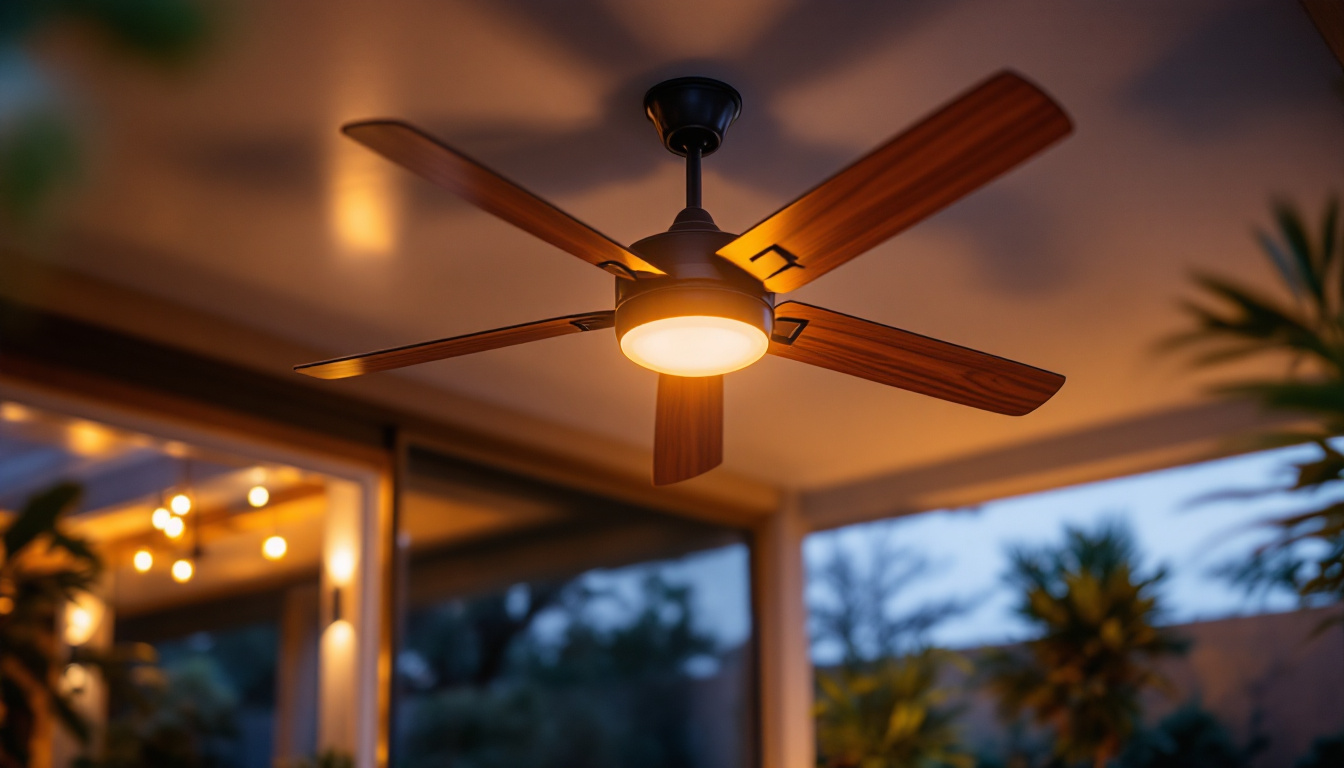
Outdoor light houses are more than just traditional beacons guiding ships through foggy nights. In modern lighting solutions, they have evolved into sophisticated structures that serve multiple purposes-ranging from aesthetic enhancement to functional illumination and safety. For lighting contractors, grasping the nuances of outdoor light houses is essential, as these installations often form the backbone of large-scale outdoor lighting projects.
At its core, an outdoor light house is a tall, strategically placed lighting fixture designed to cast light over expansive areas. Unlike standard streetlights or floodlights, these structures are engineered to maximize coverage while minimizing energy consumption and light pollution. Their design often incorporates advanced optics, durable materials, and smart control systems, making them indispensable in urban planning, commercial complexes, and public spaces.
Moreover, the aesthetic appeal of outdoor light houses cannot be understated. Many designs are inspired by architectural trends, blending seamlessly with their surroundings while providing a striking visual element. Some light houses feature customizable colors and patterns, allowing for seasonal decorations or thematic displays that enhance the ambiance of parks, plazas, and waterfronts. This versatility not only attracts visitors but also fosters a sense of community, as these installations often become landmarks within neighborhoods.
In addition to their visual and functional benefits, outdoor light houses play a crucial role in enhancing safety and security. By illuminating pathways, parking lots, and gathering areas, they deter potential criminal activity and ensure that pedestrians feel secure while navigating through public spaces at night. Furthermore, many modern light houses are equipped with motion sensors and adaptive lighting technology, which adjust brightness based on real-time conditions, thereby optimizing energy use and extending the lifespan of the lighting fixtures. This combination of safety and efficiency makes outdoor light houses a vital component of contemporary urban infrastructure.
Historically, outdoor light houses were simple, high-mounted lamps powered by incandescent or sodium vapor bulbs. Their primary function was to provide visibility and safety. However, the advent of LED technology revolutionized their role. LEDs offer longer lifespans, better energy efficiency, and superior light quality, which transformed how light houses are designed and utilized.
Today’s outdoor light houses often integrate smart sensors, adaptive controls, and wireless connectivity. These features allow lighting contractors to program lighting schedules, adjust brightness based on ambient conditions, and even monitor system health remotely. This shift not only reduces operational costs but also aligns with sustainability goals, a critical consideration in modern urban development. Moreover, the integration of IoT (Internet of Things) technology enables these light houses to communicate with other smart city infrastructure, such as traffic signals and public transportation systems, enhancing overall urban efficiency and safety.
Modern outdoor light houses are constructed using materials that withstand harsh environmental conditions—corrosion-resistant metals, impact-resistant glass, and weatherproof coatings. This durability ensures that installations remain functional and visually appealing over extended periods, reducing maintenance frequency and costs.
Additionally, modular designs have gained popularity. They allow for easier upgrades and repairs, which is particularly valuable in large-scale projects where downtime can be costly. These designs also facilitate the incorporation of new technologies as they emerge, ensuring that light houses can adapt to future advancements without requiring complete overhauls. Furthermore, the use of sustainable materials, such as recycled metals and eco-friendly coatings, is becoming more common, reflecting a growing commitment to environmental responsibility in the construction and design of outdoor lighting solutions.
In urban environments, outdoor light houses serve as central lighting points in parks, plazas, and pedestrian zones. Their ability to illuminate broad areas with uniform light improves safety and encourages community engagement during evening hours. Lighting contractors must consider factors such as light distribution patterns, color temperature, and glare control to meet municipal standards and public expectations.
Furthermore, these installations often double as architectural features, contributing to a city’s identity. The integration of customizable lighting effects can enhance landmarks and public art, making outdoor light houses a versatile tool in urban design. For instance, cities can utilize smart lighting technology to adjust brightness based on foot traffic or special events, creating a dynamic atmosphere that adapts to the community’s needs. This not only enhances the aesthetic appeal but also promotes energy efficiency, aligning with sustainable urban development goals.
For commercial complexes, outdoor light houses provide critical illumination for parking lots, loading docks, and perimeter security. The emphasis here is on reliability and efficiency. Lighting contractors need to balance brightness levels to ensure safety without causing light trespass into neighboring properties.
In industrial zones, rugged outdoor light houses with enhanced impact resistance and explosion-proof features are common. These specialized fixtures safeguard workers and equipment while complying with stringent safety regulations. Moreover, the use of advanced lighting control systems allows for remote monitoring and management, enabling businesses to optimize energy consumption and reduce operational costs. By integrating sensors that detect motion or ambient light levels, these systems can automatically adjust lighting, ensuring that areas are well-lit when needed while conserving energy during off-peak hours.
Airports, highways, and ports rely heavily on outdoor light houses to maintain operational safety during nighttime or low-visibility conditions. These installations often incorporate high-intensity discharge lamps or powerful LED arrays capable of penetrating fog and rain.
Lighting contractors working in this sector must coordinate with multiple agencies to meet regulatory requirements and ensure that lighting does not interfere with navigation or communication systems. Additionally, the strategic placement of outdoor light houses along roadways and at critical junctions plays a vital role in guiding drivers and enhancing overall traffic safety. Innovations in lighting technology, such as adaptive lighting systems that respond to real-time traffic conditions, are becoming increasingly important. These systems can help reduce accidents by providing brighter illumination when traffic is heavy or conditions are poor, ultimately contributing to safer transportation networks.
Choosing the right optics is crucial. Outdoor light houses must deliver uniform illumination across the target area while minimizing hotspots and shadows. This requires careful selection of lenses, reflectors, and beam angles. Lighting contractors often use photometric analysis software to simulate light distribution and optimize fixture placement.
Intensity levels should align with the specific application. For example, pedestrian areas benefit from softer, warmer light to enhance comfort, whereas industrial sites require brighter, cooler light for task visibility.
Energy consumption is a primary concern in modern lighting projects. Outdoor light houses equipped with LED technology and smart controls can drastically reduce power usage. Dimming capabilities and motion sensors ensure that light is only used when necessary, extending fixture life and lowering utility bills.
Contractors should also consider renewable energy integration, such as solar panels, especially for remote or off-grid locations. This approach supports sustainability initiatives and can provide cost savings over time.
Outdoor light houses must be designed for ease of maintenance. Features like hinged access panels, modular components, and standardized parts simplify repairs and replacements. Lighting contractors should plan for safe access methods, including ladders or lifts, to minimize downtime and ensure worker safety.
Regular maintenance schedules, informed by fixture diagnostics and environmental conditions, help preserve performance and appearance.
One of the growing concerns with outdoor lighting is its impact on the environment. Light pollution disrupts ecosystems, affects human health, and obscures the night sky. Outdoor light houses, due to their scale, have a significant potential to contribute to this problem if not properly designed.
Lighting contractors can mitigate these effects by using fully shielded fixtures, selecting appropriate color temperatures (preferably warm white), and implementing adaptive lighting controls that reduce output during low-activity periods.
While the primary role of outdoor light houses is illumination, their visual impact cannot be overlooked. Striking a balance between aesthetic appeal and functional performance is a common challenge. Customizable designs and finishes allow these structures to blend with or accentuate their surroundings.
Contractors often collaborate with architects and urban planners to ensure that lighting solutions complement the overall design vision without compromising on safety or efficiency.
Large-scale outdoor lighting projects can be costly. Budget limitations might tempt stakeholders to opt for cheaper, less durable fixtures, which can lead to higher long-term expenses. Lighting contractors play a vital role in advising clients on cost-effective solutions that do not sacrifice quality.
Scalable designs and phased implementation plans can help manage upfront costs while allowing for future expansion or upgrades.
Outdoor light houses are increasingly becoming nodes in smart city networks. Equipped with sensors and communication modules, they can collect data on traffic, air quality, and pedestrian movement, providing valuable insights for urban management.
This multifunctionality transforms light houses from mere illumination devices into integral components of intelligent urban ecosystems.
Emerging materials like graphene-enhanced LEDs and advanced phosphors promise higher efficiency and better color rendering. Additionally, dynamic lighting techniques that adjust color and intensity based on time of day or activity patterns are gaining traction.
Lighting contractors should stay informed about these innovations to offer cutting-edge solutions that meet evolving client demands.
The push for sustainability is driving the adoption of solar-powered outdoor light houses with battery storage systems. These installations can operate independently of the grid, making them ideal for remote or temporary applications.
Autonomous operation, combined with predictive maintenance powered by AI, will further reduce operational costs and enhance reliability.
Outdoor light houses occupy a pivotal position in contemporary lighting strategies. Their ability to provide broad, efficient illumination while incorporating advanced technologies makes them indispensable for a variety of applications. For lighting contractors, understanding the technical, environmental, and aesthetic aspects of these structures is key to delivering successful projects.
As technology continues to advance and urban landscapes evolve, outdoor light houses will remain at the forefront of lighting innovation-guiding the way toward safer, smarter, and more sustainable environments.
Ready to elevate your lighting projects with the efficiency, sustainability, and cutting-edge technology of outdoor light houses? Look no further than LumenWholesale, where we provide lighting contractors with the highest quality, spec-grade lighting products at unbeatable wholesale prices. Say goodbye to middleman markups and hello to our extensive selection that meets rigorous industry standards. With free shipping on bulk orders, you can trust that you’re getting premium lighting solutions at the best value — all without hidden fees or compromises. Make your next project shine by choosing LumenWholesale for a seamless blend of quality, affordability, and convenience. Explore our offerings and take the first step towards smarter, more sustainable lighting solutions by visiting Wholesale Lighting at the Best Value.

Explore the allure of vintage antique light bulbs and discover how simplifying their selection can benefit lighting contractors.

Discover essential tips and common pitfalls for lighting contractors when installing large outdoor ceiling fans.

Discover the impact of low profile pot lights on modern lighting projects.

Explore how ceiling lights in office spaces influence the work of lighting contractors.